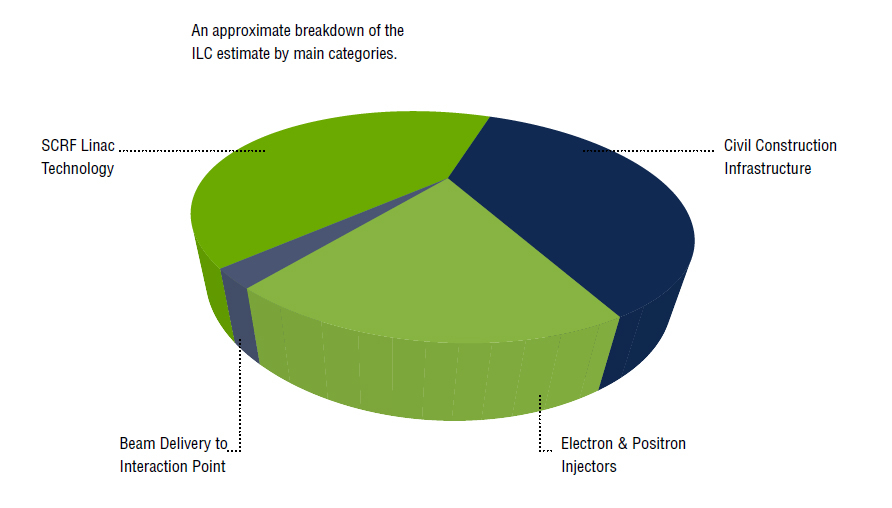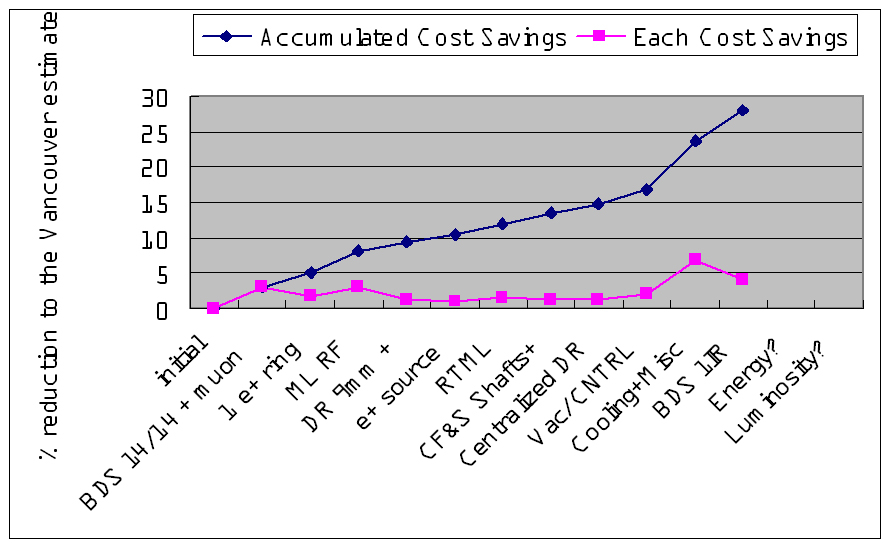Director's Corner
13 May 2010
 Barry Barish |
Keeping ILC costs under control
The cost of the project "next-generation linear collider" ILC has been a major issue, ever since we began our ILC design work in 2005. The scale of the project and the costs of the ILC are roughly equivalent to the largest present-day science projects, like the International Thermonuclear Experimental Reactor (ITER), and the Large Hadron Collider (LHC). The good news is that we believe the ILC will not cost more than these megascience projects, and they have actually been built or are being built. The bad news is that the present world economic situation and government priorities are such that it will be extremely difficult to convince governments to make yet another large investment in a fundamental science project of such a large scale. Nevertheless, fundamental science must go on, and it remains probable that new megascience projects will be undertaken in the future, probably as global projects. A linear collider is a very attractive, and convincing, candidate project.
Making the ILC a real project within the decade will depend on the confluence of many factors: exciting LHC results that firmly establish the science motivation for the ILC; producing a solid, realistic and buildable design for the accelerator; completing the crucial R&D that mitigates risk; developing a global implementation plan; and last but far from least, making a convincing case that the costs, though large, are realistic and will not grow in the future! We must pro-actively contend with the fact that, as I discussed last week, so many large science projects have experienced significant cost growth after approval and funding.
 The ILC cost breakdown. The ILC cost breakdown. |
 Cost reductions of almost 30% were applied to the RDR ILC design and costing. Cost reductions of almost 30% were applied to the RDR ILC design and costing. |
To prevent cost growth for the ILC, we established a solid starting point. We were extremely diligent in making sure we captured all costs in our reference design costing. Maybe we paid a price politically, but we know our initial cost estimate was realistic, and not 'low-balled.' We also identified areas of potential cost savings at that time that we believe can compensate for other areas, where some cost growth is likely (e.g. material costs, risk mitigation, etc).
So, what will the ILC cost? In our Reference Design Report, we estimated 6.62 billion ILC Value Units (1 ILC Value Unit corresponds to 1 US Dollar (2007), 0.83 Euros or 117 Yen) for the total cost (shared and site-dependent). In addition, we tallied separately the explicit labour required to support the construction project as 14,000 person years. As mentioned above, the total cost is of similar scale to LHC and ITER, but nevertheless it was clearly too large for governments to consider, at least immediately. Consequently, the ILC has been effectively put into the category of potential long-range projects receiving R&D funding, and our global programme has adjusted accordingly.
I would like to emphasise two points regarding our RDR costing: we made very special efforts to capture all the costs, even though we were dealing only with a conceptual design; and we also conducted an intensive cost reduction exercise. We reduced costs by almost 30% in that process and identified other areas of potential cost saving in the future. We managed to reduce the price tag from identifying areas of large costs where alternative designs could come cheaper. No single saving amounted to more than a few percent, yet the total was significant. In this process, we paid strict attention to not compromising the physics goals as laid out by a study of the International Linear Collider Steering Committee (ILCSC).
Now, we are making the next step in the design, developing what we call a technical design that will be documented at the end of 2012 in a Technical Design Report (TDR). The TDR will not be an engineering design, but rather an evolved conceptual design and the completion of much of the risk-mitigating R&D presently underway. In the same spirit as the cost reduction exercise performed for the RDR, we have picked out several key areas with potential cost savings (e.g. eliminating the second tunnel for the main linac, choosing low power parameters, smaller damping rings, etc). It is our hope that savings in these areas will compensate for growth in other areas. The biggest area of cost uncertainty for the ILC is in the huge superconducting radiofrequency system, where there is much less history to rely on — after all, like the LHC, the ILC will be its own prototype in many aspects.
A new baseline (which we called SB2009) was put forward last year for the TDR, and we are in the midst of a process of evaluating the risks and science impacts. We expect decisions will be made on each of the proposed changes over the coming year, and if all are implemented the cost reduction will amount to about 13 percent. This saving may not seem like much, but we feel they are needed to fulfil our promise of cost containment. In the next step following the TDR, doing engineering for the project, we believe that concerted efforts in value engineering will be the primary tool to contain costs.
We are confident that over the coming years of creating a technical design and then an engineering design leading to the project, with sufficient diligence and commitment, we can control the cost growth, while maintaining the physics capabilities that at the "raison d'être" for the ILC. It will not be easy to achieve true cost containment, especially when looking at previous projects, but we believe it is possible and will be an essential element in making a convincing case for building the ILC when the time comes.
-- Barry Barish